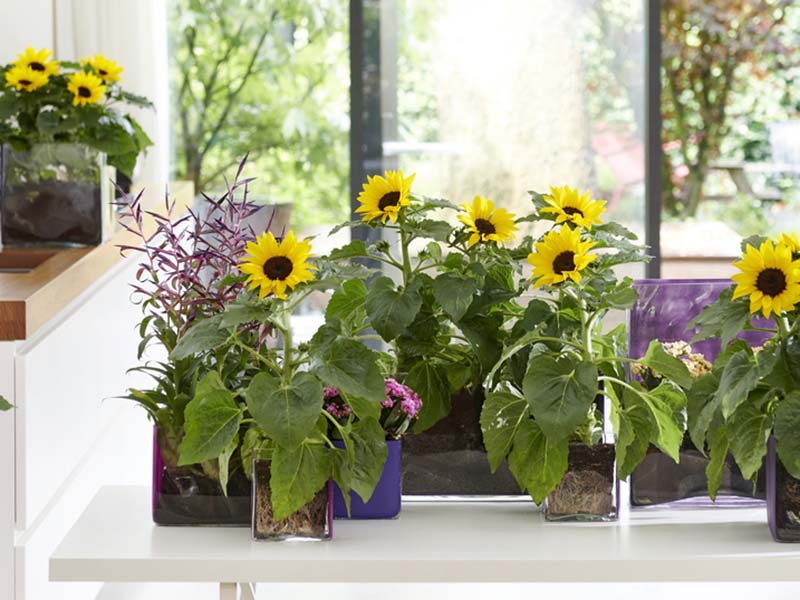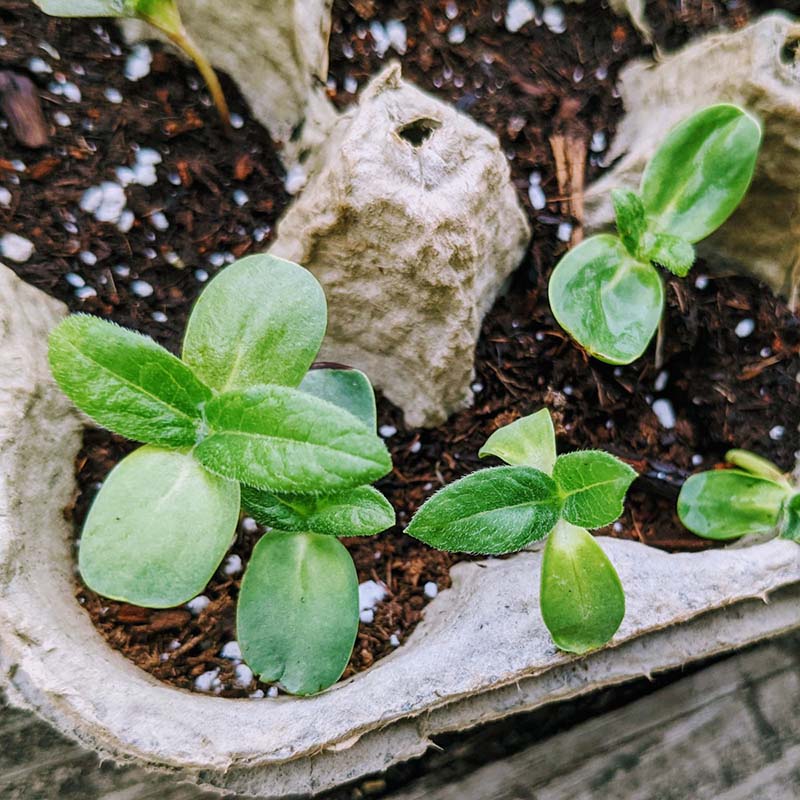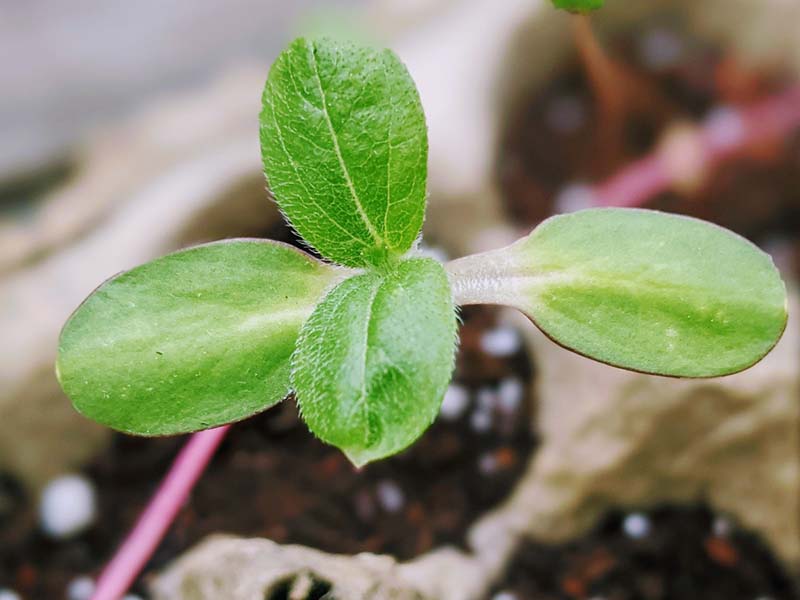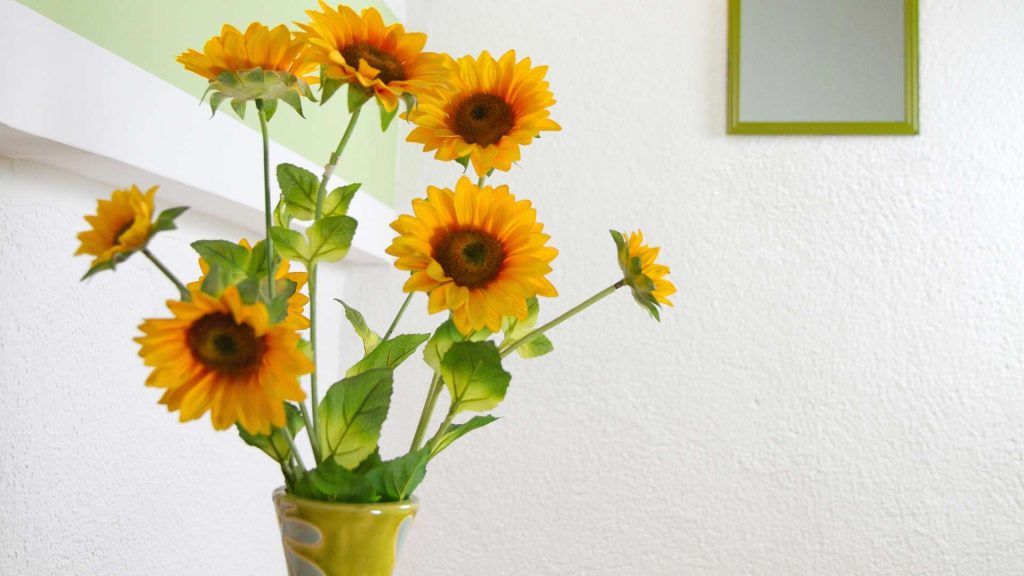Sunflowers are a widely loved, seasonal flower that imbues sunshine and happiness on even the dullest of days. With sunflowers often reaching 6 to 10 feet tall, growing sunflowers indoors may not have even crossed your mind.
Growing sunflowers indoors is a wonderful prospect. Sunflowers are vibrant, eye-catching flowers that brighten up any space. So often we assume that you can’t grow sunflowers in a pot, but that’s just not true!
Growing sunflowers in containers are actually easier than you may believe and with this guide to growing sunflowers indoors, you’ll have those colorful blooms decorating every nook and cranny in no time.
Choosing the Right Sunflower Variety
There are many different types of sunflowers, each with its own unique set of characteristics. When choosing sunflowers to grow indoors, there are a few things to consider.

Dwarf Sunflower Varieties
Dwarf sunflower varieties are the best choice for growing indoors. These compact plants have smaller blooms and don’t grow as tall as traditional sunflowers, making them a great option for growing in containers or small spaces. Some popular dwarf sunflower varieties include Teddy Bear, Dwarf Sungold, and Dwarf Russian Sunflower.
Height Considerations
When growing sunflowers indoors, height is a critical factor to consider. Make sure to choose a variety that will not outgrow your growing area. Dwarf sunflower varieties typically grow to be about 1-3 feet tall, while traditional sunflowers can reach up to 15 feet tall or more.
Color and Bloom Size
Sunflowers come in a range of colors, including yellow, orange, red, and mahogany. When choosing a sunflower variety to grow indoors, think about what color you want to add to your space and choose a variety that will produce blooms in that color.
In terms of bloom size, sunflowers can have blooms that range from small and dainty to large and showy. Dwarf sunflower varieties typically have smaller blooms, while traditional sunflowers have larger blooms that can be up to 12 inches in diameter.
Sunlight Requirements
Sunflowers are sun-loving plants and need plenty of light to grow and bloom. When growing sunflowers indoors, make sure to place them near a sunny window where they will receive at least 6 hours of direct sunlight each day. If you don’t have a sunny window, you can use grow lights to provide your sunflowers with the light they need to grow.
Preparing the Growing Area
Before planting your sunflowers, you need to prepare your growing area. This includes selecting containers, preparing soil, and ensuring proper drainage and watering.

Selecting Containers
Sunflowers can be grown in a range of containers, from small pots to large, decorative planters. When selecting a container, make sure it is large enough to accommodate the roots of your sunflowers and has drainage holes to allow excess water to escape.
Soil Requirements
Sunflowers need well-draining soil to thrive. A good quality potting mix or garden soil will work well for growing sunflowers indoors. Make sure to mix in some compost or organic matter to improve the fertility of the soil. Avoid using heavy clay soils, as these can hold too much moisture and lead to root rot.
Drainage and Watering Considerations
Sunflowers need to be watered regularly, but it is important not to overwater them. Make sure to choose a container with drainage holes to allow excess water to escape, and avoid leaving your sunflowers standing in water. The soil should be kept moist but not waterlogged.
Sunlight Requirements
As mentioned in Section Choosing the Right Sunflower Variety, sunflowers need plenty of light to grow and bloom. Place your sunflowers near a sunny window or use grow lights to provide the necessary light. If you are using grow lights, be sure to place them close enough to the sunflowers to provide adequate light, but not so close that they burn the leaves.
Planting and Caring for Sunflowers
Now that you have prepared your growing area, it is time to plant your sunflowers. Follow these steps to ensure success:

Planting the Sunflower Seeds
Fill your container with well-draining soil and water it thoroughly. Then, plant your sunflower seeds about 1 inch deep and water them again. Cover the container with plastic wrap or a plastic lid to create a greenhouse effect and keep the soil moist. When the seedlings have emerged and are about 2 inches tall, remove the plastic wrap or lid and place the container in a sunny location.
Watering and Moisture Requirements
Water your sunflowers regularly to keep the soil moist, but avoid overwatering. Check the soil regularly and water as needed. Sunflowers do not like to be waterlogged, so make sure to allow the soil to drain well between waterings.
Fertilizing and Nutrient Requirements
Sunflowers need regular feeding to promote healthy growth and blooming. A balanced, water-soluble fertilizer can be applied every two weeks. You can also add a slow-release fertilizer when planting the sunflowers to provide them with a steady supply of nutrients throughout the growing season.
Pests and Diseases
Sunflowers are relatively pest-free, but they can be susceptible to certain diseases, such as powdery mildew and leaf spot. To prevent these problems, make sure to provide adequate light and air circulation for your sunflowers. If you notice any signs of disease, remove any affected leaves and treat the plant with a fungicide.
Pruning and Training Sunflowers
Sunflowers do not require much pruning, but you can pinch back the tips of the plants when they are young to encourage bushier growth. When the sunflowers have reached their desired height, you can also remove any lower leaves to help prevent disease.
Conclusion
Growing sunflowers indoors can add a pop of color and beauty to any space. By following these simple steps, you can successfully grow sunflowers indoors and enjoy their stunning blooms year-round. Whether you are a seasoned gardener or just starting out, growing sunflowers indoors is a fun and rewarding experience that anyone can enjoy.


